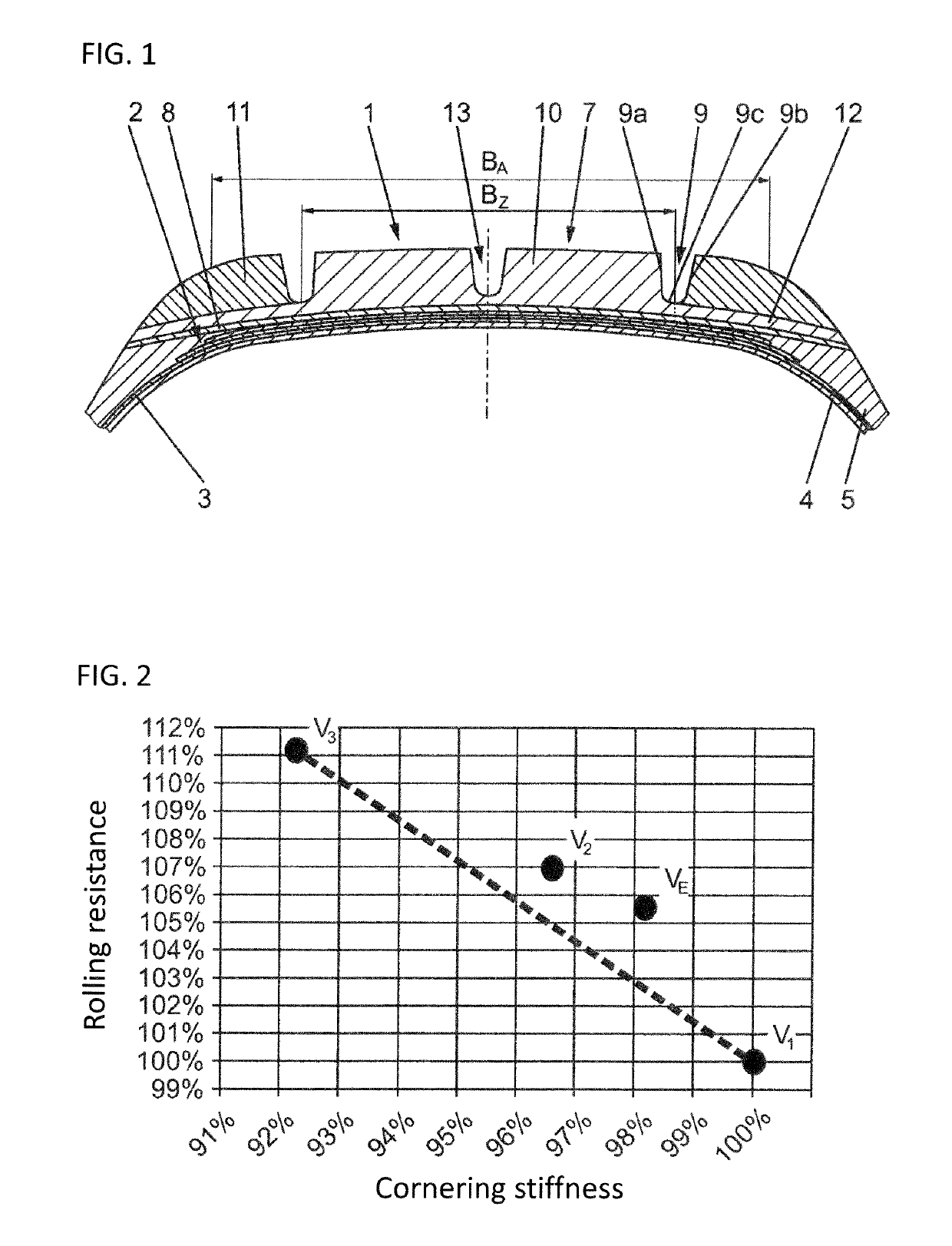Pneumatic vehicle tire
a technology for pneumatic vehicles and tires, applied in the direction of tires, tyre parts, tread bands/patterns, etc., can solve the problem of reducing the rolling resistance of the rubber compound in the shoulder portions, and achieves the effect of reducing the rolling resistance, reducing the impact of the tire, and reducing the impact resistan
- Summary
- Abstract
- Description
- Claims
- Application Information
AI Technical Summary
Benefits of technology
Problems solved by technology
Method used
Image
Examples
Embodiment Construction
[0022]Pneumatic vehicle tires configured in accordance with the disclosure are provided or are particularly readily suitable for passenger vehicles, vans and the like. Of the customary components of a tire for passenger vehicles, FIG. 1 shows a tread 1, a belt 2, a radial ply casing 3, and an air-tight inner layer 4. In the example, the belt 2 has two belt plies which, in a known manner, can contain steel cord as a reinforcement. The ply casing 3 is reinforced in the customary manner with textile reinforcements. The belt 2 can be covered by a belt bandage (not shown) including rubberized textile reinforcements encircling the tire in the circumferential direction. Furthermore, the axially outer portions of side walls 5 are illustrated. Bead regions with bead cores, core profiles and the like are not shown.
[0023]The tread 1 can be configured as a single part, from a single rubber layer, or can be composed of two rubber layers, namely of a radially outer rubber layer, a tread cap 7, an...
PUM
| Property | Measurement | Unit |
|---|---|---|
| Tg | aaaaa | aaaaa |
| Tg | aaaaa | aaaaa |
| elongation | aaaaa | aaaaa |
Abstract
Description
Claims
Application Information
 Login to View More
Login to View More - R&D
- Intellectual Property
- Life Sciences
- Materials
- Tech Scout
- Unparalleled Data Quality
- Higher Quality Content
- 60% Fewer Hallucinations
Browse by: Latest US Patents, China's latest patents, Technical Efficacy Thesaurus, Application Domain, Technology Topic, Popular Technical Reports.
© 2025 PatSnap. All rights reserved.Legal|Privacy policy|Modern Slavery Act Transparency Statement|Sitemap|About US| Contact US: help@patsnap.com

